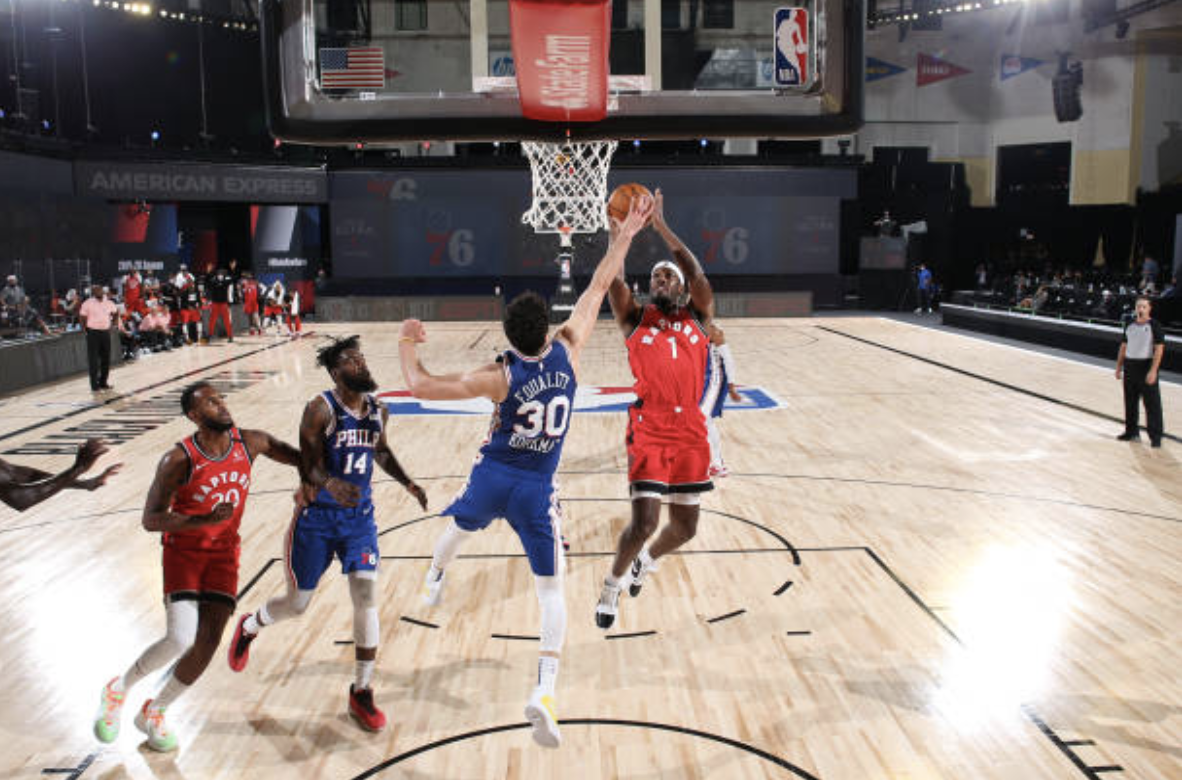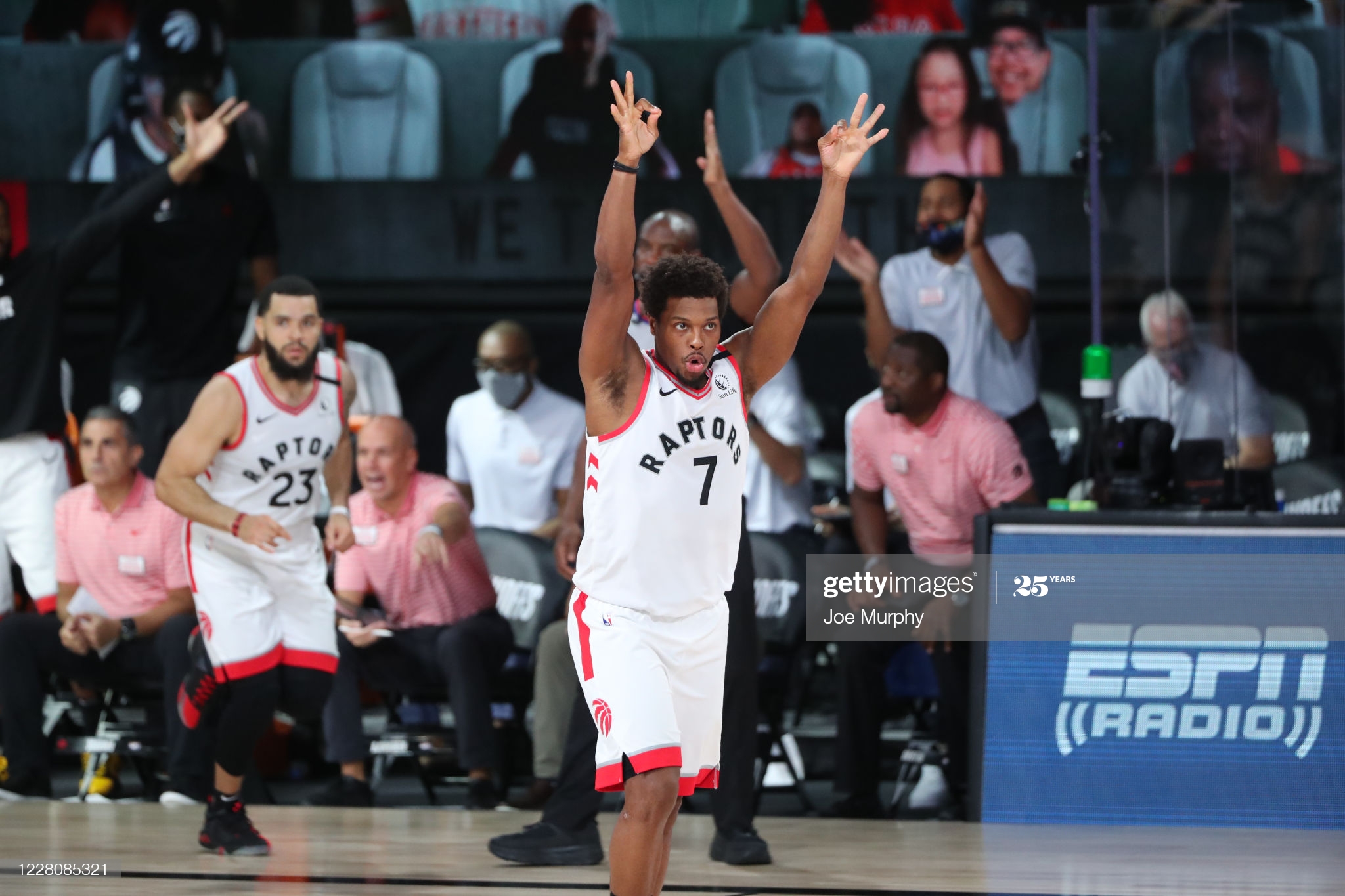These Raptors Republic player reviews have had varying intents. Some have been preemptive farewells to greats, like Marc Gasol. Others have been balanced pieces, looking at how players’ pasts while predicting how their futures could unfold. While for Paul Watson Jr., a player who saw only 87 total minutes of court time for the Raptors in 2019-20, there’s not much past to investigate. Any piece on his 2019-20 must, almost by definition, almost look forward.
It’s not hard to point to the moment when everyone discovered that Paul Watson Jr.’s got next. Twenty-seven of Watson’s 87 total minutes came in Toronto’s final regular season game of the year. He scored 22 points on 13 shots, playing the game of his career in Toronto’s win over the Denver Nuggets. He was phenomenal alongside point guard Stanley Johnson and center Dewan Hernandez, since released. Johnson’s 23 points were a game high, and he even scored the winning basket. The point is that the game was full of irregularities — some would say lunacies. So it’s reasonable to wonder whether Watson was simply a beneficiary of the madness, or whether the game was foreshadowing of big things to come for Watson.
The answer is probably a little bit of both.
Watson did show some exciting promise last year. First and foremost, though, was with the Raptors 905. He was, frankly, dominant. He averaged 19.0 points, 6.6 rebounds, and 1.9 assists per game. Not out of the world, but extremely good. And all the better for Watson’s incredible efficiency, shooting 42.3 percent from deep on 7.2 attempts per game and 56.3 percent from two-point range. (Those are Pascal Siakam G League numbers from 2016-17.) And all the more impressive for Watson’s popping to the front of the team despite the presence of players with more seeming upside in Henry Ellenson, Tyler Ennis, and Oshae Brissett.
It was Watson’s first time dominating the G League, too. In his third year, he averaged more than double the shot attempts he averaged in 2018-19 with the Westchester Knicks. It was also the first time he’s shot better than 37 percent from deep.
For the majority of the season, none of that G League dominance transitioned to the NBA. He only played four minutes here, two minutes there. All garbage time. Then he exploded in the bubble and showed that his skills that crushed the G League would transition quite nicely to the NBA.
Offensively, he’s not freakishly athletic, but he’s got a nifty side-to-side handle and knows when to jet forward. For a legit six-foot-six wing, that’s enough. He’ll never be a primary initiator, but he’s got enough juice to attack rotations and capitalize in transition.
He’s not a plus passer, but he fits into the offense and makes the right pass at the right time. But he’s got some punch to his passing, and he can make a high-calorie pass when the opportunity arises.
Defensively, Watson isn’t an event generator, in that he’ll never force a huge number of steals or blocks. But he is a good, toosly defender. He moves his feet and keeps his body in front of players. Often that’s enough, even against stars like Khris Middleton.
He can get lost sometimes, particularly overhelping. That’s normal for players who haven’t played a lot of time in the NBA. They’re used to being able to recover over any distance, but that’s not true in the league unless you’re an athlete like Siakam. Watson’s a heady defender. He’s solid in isolation, but so too is he great at chasing off ball. Here against Kyle Korver, Watson stays attached through multiple screens before eventually drawing the offensive foul by darting through the on-ball screen before it’s set.
For all of Watson’s positive attributes, his ability to contribute will rest with his jumper. If his jumper is real, that’s enough to be a rotation player offensively. But the jumper has to be real. One G League season as a marksman doesn’t always mean a guy can hit over 40 percent for his career. His NBA marks aren’t enough evidence; he shot 4-for-12 over the season with Toronto. But his jumper looks pure, and he’s got a solid base and quick trigger. His footwork is loose, but he has a good innate sense of creating space. At his size, he doesn’t need to be a 40-percent shooter from deep to space the floor. If he can hit anywhere between 37 and 42 percent for the Raptors next year, that would probably put him in a good spot to win a place in the rotation.
If the jumper stays true, Watson projects to be similar to Malcolm Miller but with more dribbling, passing, and finishing skills. That’s a rotation player on any team in the league. He’s currently on a two-way contract, but that tag will be expanded this year, and he’ll be able to play in up to 50 games. And if he hits that number, the Raptors could always convert him to a full rotation spot. If Watson plays 50 games or more, that would be a huge win for the Raptors. The team is slightly thin at the wing spot.
Watson will be competing for real minutes behind the wing fixtures, Siakam, OG Anunoby, and Norman Powell. Rondae Hollis-Jefferson played in 60 games last year for the Raptors. Watson likely won’t hit that number, but there are minutes up for grabs in Toronto. And there’s no reason why Watson can’t stake a claim to them.



